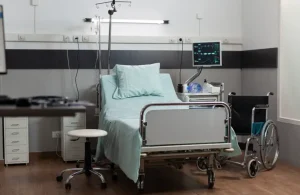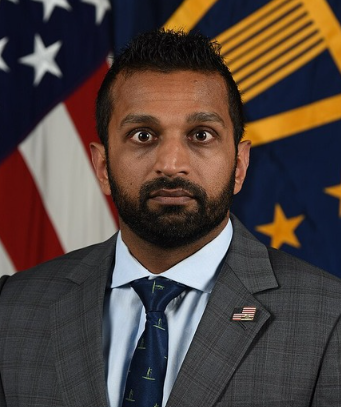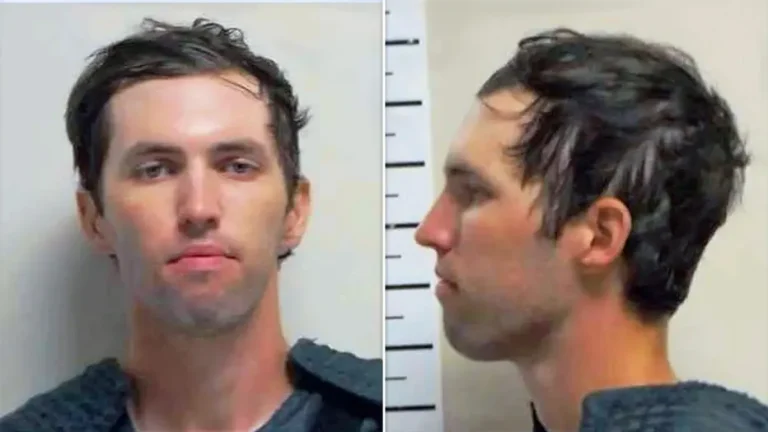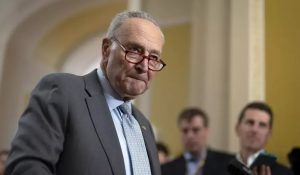NOTE:VIDEO AT THE END OF ARTICLE.
In a coordinated effort underscoring the United States government’s commitment to combating violent transnational gangs, federal and state law enforcement officials announced on Thursday the successful arrest of one of the three most senior leaders of the Mara Salvatrucha (MS‑13) network on the East Coast. The 24‑year‑old suspect, whose identity has not been released pending formal charging, was taken into custody without incident in Woodbridge, Virginia—a suburb of Washington, D.C. Attorney General Pam Bondi, FBI Director Kash Patel, Deputy Attorney General Todd Blanche, and Department of Justice official Emil Bove monitored the operation from an adjacent tactical command center, offering an extraordinary window into the high‑stakes coordination behind the scenes.
The arrest represents a major victory in the ongoing national initiative to dismantle MS‑13’s leadership structure and remove its most dangerous operatives from United States soil. With this single operation, law enforcement authorities delivered on directives from the highest levels of the Trump administration to “keep America safe,” while underscoring that prosecutorial reach now extends to violent gang figures who previously believed they could evade detection.
I. Background on MS‑13 and Its Threat to Public Safety
Formed in Los Angeles in the 1980s by Salvadoran immigrants fleeing civil war, MS‑13—also known as “Mara Salvatrucha”—has evolved into one of the most notorious transnational criminal organizations. Despite repeated federal and local crackdowns, the gang maintains a presence across multiple U.S. states, particularly along the East Coast in Maryland, Virginia, and New York, where it is implicated in homicides, extortion, human trafficking, and illegal drug distribution.
-
Organizational Structure and Leadership
MS‑13’s hierarchy is loosely federated, with individual “cliques” operating semi‑independently under the broader Mara umbrella. Each clique typically reports to regional bosses who coordinate cross‑jurisdictional criminal activities, enforce discipline, and oversee recruitment. The recent arrest targeted the East Coast regional commander—one of only three individuals recognized by law enforcement as holding the gang’s highest echelon of power inside the United States. -
Violence and Community Impact
Known for its brutality—ranging from machete attacks to ritualistic killings—MS‑13 has instilled fear in communities where it operates. Local, state, and federal agencies have repeatedly cited the gang’s involvement in unsolved homicides and violent street crime, prompting concerted interdiction efforts. In Prince William County alone, authorities report that MS‑13‑related arrests and investigations have surged in recent years, reflecting both the gang’s resilience and law enforcement’s intensified focus. -
Prior Federal Actions
Over the last decade, the Department of Justice and the FBI have pursued dozens of MS‑13 prosecutions under Racketeer Influenced and Corrupt Organizations (RICO) statutes, resulting in lengthy prison sentences for key members. While these indictments disrupted individual cliques, gang leadership often adapted by promoting lower‑tier associates, necessitating ongoing operations to target supervisory figures.
II. Planning and Execution of the Woodbridge Operation
The operation in Woodbridge did not occur in isolation. Instead, it was the culmination of weeks of intelligence gathering, interagency collaboration, and targeted surveillance—an effort emblematic of the broader “MS‑13 Targeted Enforcement Squad” initiative that the Trump administration has championed since 2017.
A. Intelligence and Surveillance
-
Multiagency Intelligence Fusion
Federal Bureau of Investigation analysts, working alongside Homeland Security Investigations (HSI) and local law enforcement partners, pieced together communications intercepts, financial transaction data, and human‑source reports. These efforts mapped out the suspect’s daily patterns, safe houses, and associate networks, enabling precise timing for the arrest. -
Tactical Planning
On the day of the operation, SWAT teams from the FBI and the Virginia State Police coordinated with U.S. Marshals Service assets. A tactical command center was established near the suspect’s residence, allowing senior officials to monitor live video feeds and receive real‑time intelligence updates. Meanwhile, federal prosecutors stood ready to file emergency detention paperwork upon apprehension.
B. Execution and Arrest
-
Operation Execution
Agents and officers approached the Woodbridge location in unmarked vehicles during the early morning hours to minimize public disruption. After confirming the suspect’s presence through overheard radio communications and pre‑positioned surveillance cameras, a breach team quietly secured the perimeter. Using surprise and overwhelming force, they apprehended the individual without firing a shot. -
Custody and Transfer
Within minutes of the arrest, the suspect was escorted to an FBI transport vehicle and taken to a secure facility for processing. Evidence including electronic devices, identification documents, and weapons—seized under warrant—will undergo forensic analysis to support federal charges.
III. Statements from Federal Leadership
At a press briefing convened at the adjacent tactical operations center, Attorney General Pam Bondi articulated the significance of the arrest and framed it within her broader mandate to ensure national security.
“Early this morning, one of the top leaders of MS‑13 on the East Coast was apprehended right here in Virginia. He is one of the three most important operatives in the entire United States. He is an illegal alien from El Salvador—and he will not be living in our country much longer,” Bondi declared, emphasizing the suspect’s status and the transnational nature of the threat.
Bondi went on to praise the operation’s meticulous planning and execution:
“We executed a clean, safe operation, and the bad guys are now in custody. Thanks to the FBI, we have removed one of the worst of the worst from our streets. Virginia and the entire nation are safer today.”
Echoing the administration’s political context, Bondi linked the operation to broader immigration and border policies:
“From the moment President Trump took office, he pledged to make America safe. He shut down our borders to secure our communities, and now it is our job to remove violent criminals. We will not have another tragedy like Laken Riley.” (Riley’s high‑profile murder by an alleged MS‑13 affiliate in Maryland had galvanized support for stricter enforcement.)
Bondi continued:
“Arrests have increased by 468% compared to the same period last year. We didn’t need new laws—President Trump always says we needed a new president to enforce existing statutes, and that is exactly what we’ve done.”
Deputy Attorney General Todd Blanche and DOJ official Emil Bove were also present, underscoring the department’s unified front. Meanwhile, FBI Director Kash Patel underscored law enforcement’s ongoing mandate:
“This specialized task force will operate wherever necessary across the country to deliver justice and the security American citizens deserve… If you continue to commit violent crimes, you will meet the same fate as this individual did this morning.”
Patel added a poignant note on law enforcement morale and public safety:
“This is what happens when we let good cops do their jobs. We are returning safety to our communities, and America should take note of this achievement. We stand proud alongside these brave officers.”
IV. Virginia’s Role: Governor Youngkin’s Endorsement
Virginia Governor Glenn Youngkin (R) was quick to commend the operation and highlight his administration’s collaboration with federal partners.
“Welcome to Virginia,” Youngkin began. “Over the past four weeks, this task force—combining federal, state, and local resources—has become a model for eradicating drug and terrorist networks, including MS‑13 and Tren de Aragua. These are not mere street gangs; they are international terrorist organizations with members residing in our communities.”
The governor detailed the scope of Virginia’s contribution:
-
287(g) Memorandum
On his first day in office, Youngkin signed a 287(g) agreement deputizing state troopers and corrections officers to perform immigration enforcement tasks under federal supervision—a move completed in just 20 hours. -
Multiagency Coordination
Youngkin praised Colonel Gary T. Settle of the Virginia State Police and Judge Chad Dotson of the Department of Corrections for their leadership, along with Secretary of Public Safety and Homeland Security Terry Cole and Attorney General Jason Miyares for steering state resources into the task force. -
Results to Date
Over the last month, Northern Virginia agencies have arrested 340 individuals in connection with violent crime and gang activity, Youngkin reported, framing Thursday’s arrest as a pivotal victory.
He concluded by expressing gratitude to frontline officers:
“These courageous men and women don bulletproof vests every day, risking their lives. They rarely hear ‘thank you,’ but today they deserve our deepest appreciation.”
https://youtu.be/BRBDEDgmZfI









